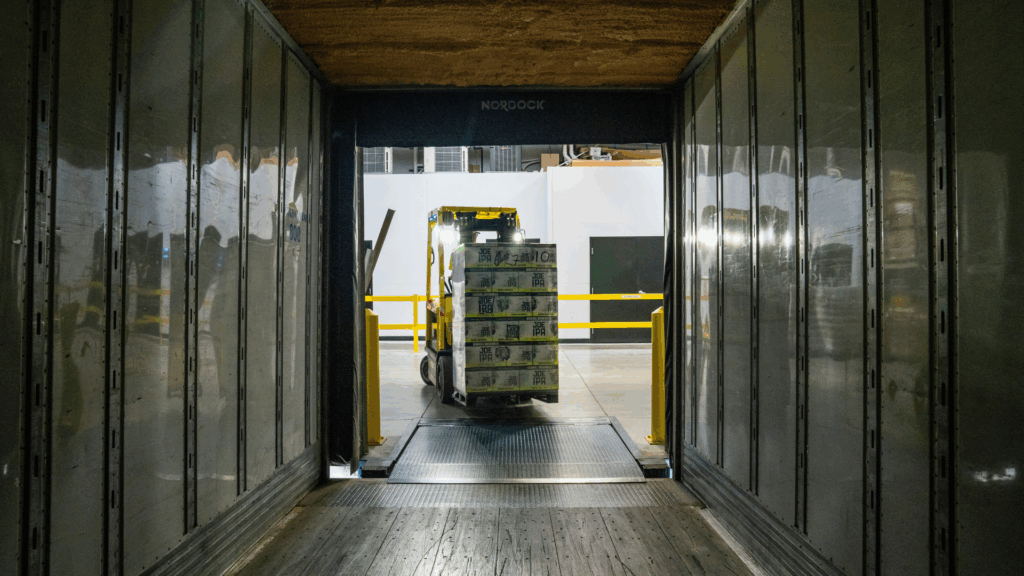Introduction
This article will break down what supply chain execution is and how it keeps daily operations running smoothly across warehouses, transportation networks, and distribution centers. You’ll learn how order fulfillment, inventory control, labor coordination, and real time visibility all come together to support faster, more reliable decision making. We’ll walk through the core components of SCE, common challenges, and the technologies shaping its future, and show how Rebus helps teams move from disconnected systems to a unified, live operational picture that scales across your entire network.
Table des matières
Supply chains have evolved into fast-moving, highly connected networks where even small disruptions can impact customer experience and profitability. For those wondering what is supply chain execution, it involves systems that guide daily work, ensure consistency, and help teams respond to change the moment it happens. Businesses can no longer rely on static plans to keep operations running smoothly. This is where supply chain execution becomes essential.
When companies ask what supply chain execution is, the real question is how they can bring more speed, accuracy, and predictability to the warehouse floor, transportation network, and everywhere inventory moves. This article breaks down the core functions of supply chain execution, why it matters, and how modern technology is reshaping the future of logistics.
Understanding the Role of Supply Chain Execution in Modern Business
Supply chain execution covers the day-to-day processes that move goods from order creation to final delivery. It includes activities like picking, packing, shipping, labor coordination, inventory movements, carrier communication, and real time tracking. If supply chain planning outlines what should happen, execution ensures it actually does.
For today’s operations teams, strong execution is no longer optional. Customer expectations keep rising, labor resources remain stretched, and supply networks face constant volatility. With clearer visibility and better control over daily work, companies can move quickly, reduce errors, and make informed decisions even under pressure.

Core Functions of Supply Chain Execution
Supply chain execution brings structure and clarity to the work that happens across warehouses, distribution centers, and transportation networks. Core components include:
Order Processing and Fulfillment
Execution starts with accurate, efficient order processing. This involves routing orders to the right location, assigning tasks, managing picking and packing workflows, and keeping fulfillment aligned with customer expectations. With reliable order execution, companies reduce rework and improve on-time performance.
Inventory and Warehouse Operations
Real-time inventory insight is essential for preventing stockouts, mispicks, and workflow bottlenecks. Supply chain execution tools support cycle counting, replenishment, slotting, and inventory accuracy across the warehouse. Better visibility means teams know exactly what is available and where it is located.
Transportation and Delivery Management
From carrier selection to routing and load planning, execution ensures shipments move efficiently every day. Transportation execution reduces freight costs, creates more predictable delivery timelines, and gives customers clear visibility into where their orders are throughout the journey.
Compliance and Risk Management
Regulated industries and retail compliance requirements place strict demands on labeling, documentation, product handling, and quality assurance. Execution systems help teams meet these requirements consistently, reducing the risk of penalties or lost business.
Real Time Monitoring and Visibility
Visibility powers faster decisions. Modern supply chain execution platforms give leaders a single version of the truth across inventory, labor, orders, and transportation. When every stakeholder sees what is happening in real time, coordination becomes easier and disruptions are addressed before they escalate.
How Supply Chain Execution Differs from Supply Chain Planning
Supply chain planning creates forecasts, production schedules, and replenishment strategies. It looks ahead, shaping the strategy for weeks or months. Supply chain execution handles what happens today. It coordinates people, tasks, equipment, and inventory in real time.
Planning answers “What should happen?”
Execution answers “What is happening, and what must we do right now?”
Without strong execution, even the best plans fall short. Companies that connect planning and execution through real time data perform better, adapt faster, and operate with more certainty.
The Benefits of Strong Supply Chain Execution
Companies that strengthen their supply chain execution capabilities see measurable improvements across operations.
Streamlined Operations and Higher Efficiency
Execution reduces manual steps, centralizes information, and ensures teams stay aligned. With fewer delays and clearer workflows, operational efficiency improves and resources are used more effectively.
Lower Costs and Better Resource Allocation
With better visibility into performance, companies can optimize labor, transportation, and inventory spending. Execution systems help eliminate costly errors, reduce overtime, and prevent the last-minute fixes that drive operational waste.
Improved Delivery Times and Customer Satisfaction
Accurate order processing and real-time shipment monitoring lead to more reliable delivery experiences. Customers get their orders faster and with fewer surprises, improving satisfaction and repeat business.

Technologies That Support Supply Chain Execution
Several technologies serve as the foundation for strong execution workflows.
Warehouse and Transportation Management Systems
WMS and TMS platforms drive accuracy in picking, putaway, routing, and freight handling. They provide structure to daily tasks and ensure consistency across facilities.
Automation, IoT, and Robotics
Connected devices and automation streamline high volume or repetitive work. Robotics improve picking accuracy, IoT sensors help track product conditions, and automated systems speed up warehouse workflows.
Data Analytics and Cloud Integration
Cloud based platforms make it possible to bring together data from multiple systems into a single view. Analytics tools help teams understand what is working, what is not, and where adjustments are needed.
Control Towers and End to End Visibility Tools
Control towers unify data from warehouses, carriers, inventory systems, labor tools, and customer orders. This visibility enables quick decisions and supports more aligned planning and execution.
Challenges Companies Face in Supply Chain Execution
Even high performing organizations encounter obstacles that slow execution or add unnecessary cost.
Lack of Integration Across Systems
Disconnected technology forces teams to rely on manual updates. This leads to inefficiencies, communication gaps, and inconsistent information.
Limited Visibility Across Global Operations
Without end-to-end visibility, companies struggle to anticipate issues or make proactive decisions. Blind spots increase delays and make it harder to adjust to demand changes.
Adapting to Rapid Market Changes
Sudden shifts in labor availability, transportation capacity, or consumer demand can disrupt operations. Companies without flexible execution tools are forced into reactive decision making.
Best Practices for Effective Supply Chain Execution
Organizations can strengthen execution by focusing on these core best practices:
- Implement real time visibility tools across systems
- Standardize workflows to eliminate variability
- Use analytics for better labor planning and task management
- Integrate WMS, TMS, and LMS platforms for unified insights
- Invest in automation where it reduces repetitive work
- Give teams the tools they need to act quickly and confidently
With these practices in place, execution becomes more consistent, scalable, and resilient.
Conclusion: Why Supply Chain Execution Is Key to Business Success
Modern logistics demands faster decisions, more accurate operations, and a level of agility that traditional methods cannot support. As networks grow more complex and customer expectations continue rising, supply chain execution has become a cornerstone of operational success.
Companies that invest in better execution gain the ability to operate with speed and consistency even when conditions shift. They reduce waste, improve accuracy, and create better customer outcomes.
If you want to improve labor performance, increase visibility, or streamline fulfillment, the Rebus Labor Management System is a strong place to start.
Learn more here: https://rebus.io/products/labor-management-system/
FAQs about Supply Chain Execution (SCE)
- What is supply chain execution in simple terms?
Supply chain execution is the set of day-to-day processes that move products from order creation to final delivery. It guides how inventory, labor, and transportation work together to fulfill customer demand. Its purpose is to ensure operations run smoothly and consistently.
- How does supply chain execution differ from supply chain planning?
Planning focuses on forecasting and long-term strategy while execution handles real-time operations. Planning determines what should happen, and execution ensures it actually does. Both are essential but serve different roles in the supply chain.
- Why is supply chain execution important for businesses today?
Customers expect fast, accurate deliveries and real-time updates. Strong execution helps companies meet those expectations while controlling costs and reducing operational risks. It creates the stability needed to adapt to constant change.
- What are the main components of supply chain execution?
- Core components include order fulfillment, warehouse operations, transportation management, compliance activities, and real time visibility. Together they form the foundation for daily operational control. Each function supports faster and more efficient movement of goods
- How does supply chain execution improve customer satisfaction?
Stronger execution reduces delays, errors, and variability. Customers receive accurate shipment updates and reliable delivery windows. Consistent performance builds trust and drives repeat business.
- What technologies are most commonly used in supply chain execution?
Common technologies include WMS and TMS platforms, automation, IoT sensors, robotics, analytics tools, and control towers. These systems work together to streamline workflows and provide real-time visibility.
- What challenges do companies face when implementing supply chain execution?
Many organizations struggle with disconnected systems, limited visibility, and outdated workflows. Rapid market shifts and labor constraints add additional pressure. Execution tools help overcome these challenges by centralizing data and improving decision making.
- Can small and mid-sized businesses benefit from supply chain execution tools?
Yes. Modern tools are scalable and can support operations of any size. SMBs often see quick gains in accuracy, productivity, and cost control when adopting execution technology.
- How is supply chain execution evolving with AI and automation?
AI improves decision making by analyzing patterns and predicting disruptions. Automation speeds up repetitive tasks and increases accuracy. Together they make execution more agile and resilient.












